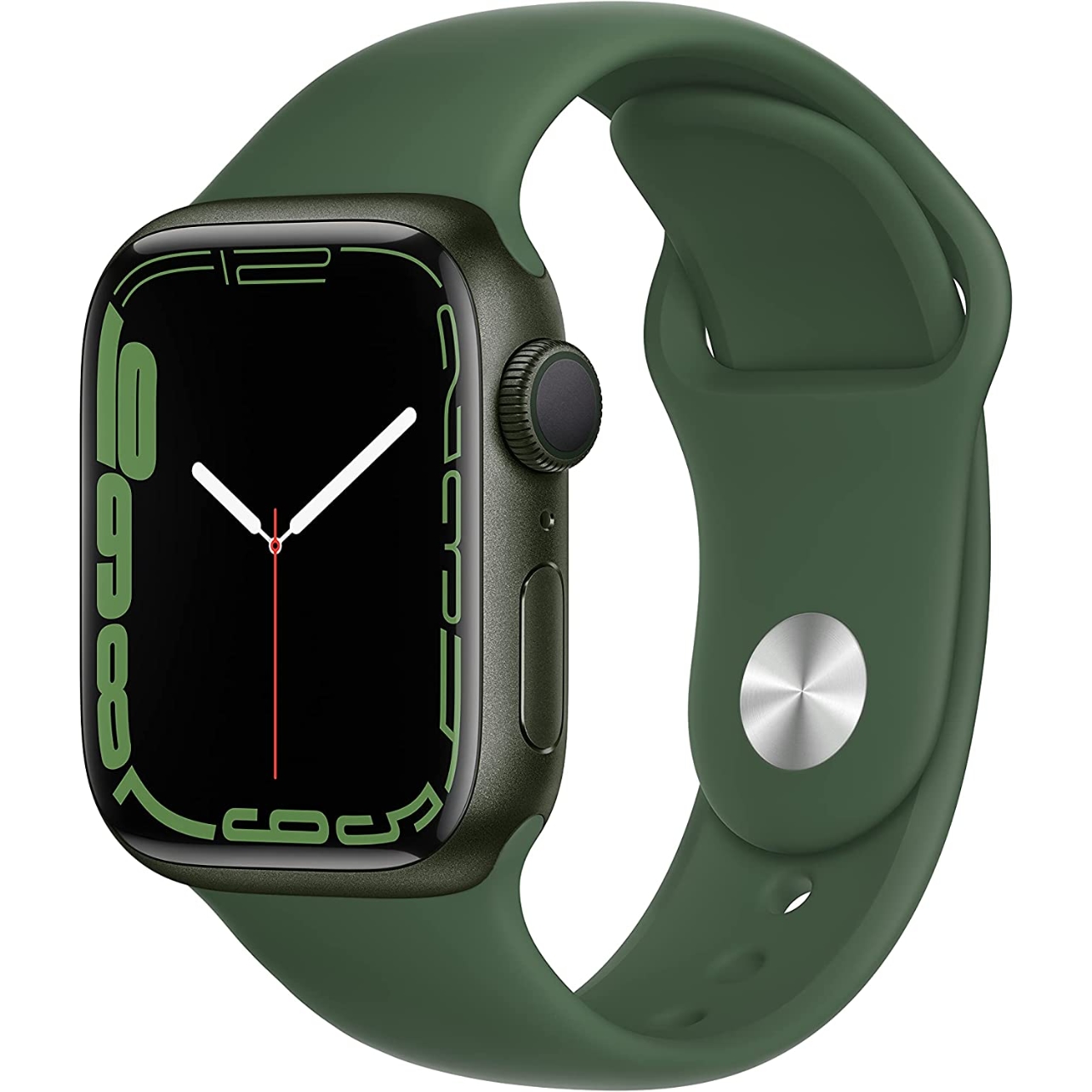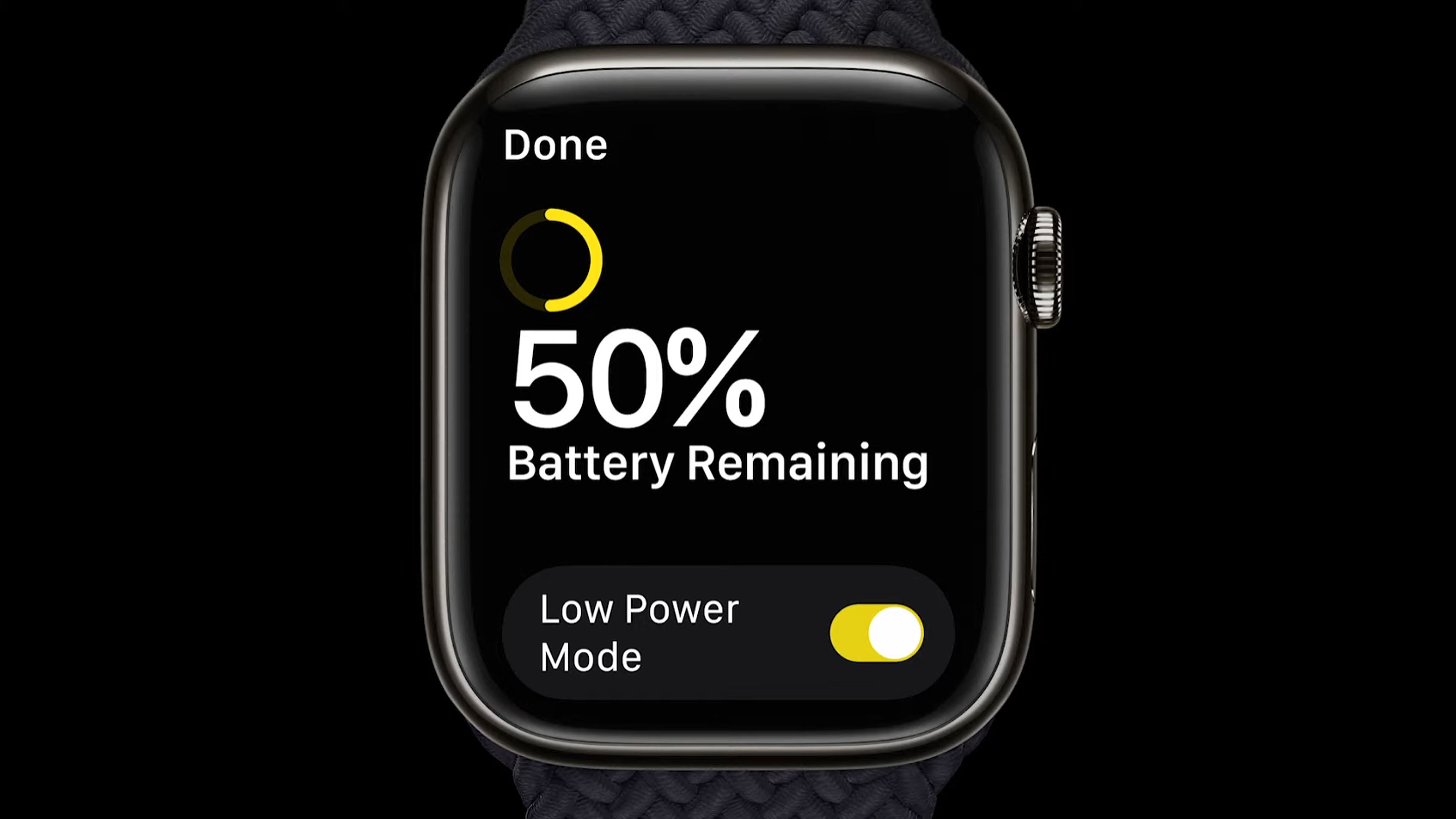Apple Watch Series 8 vs. Series 7: Should you upgrade?
Is the Apple Watch Series 8 worth the upgrade over your Series 7? Let's find out.

Take your temperature
The Apple Watch Series 8 is the direct successor to the Series 7, and while it doesn't come with any significant design changes, it certainly is an upgrade. With a temperature sensor that can help you detect illness or help you with ovulation tracking plus the new Crash Detection feature, the Series 8 offers more health features than the previous generation.
Pros
- Temperature Sensor
- Crash Detection
- S8 processor
Cons
- Likely not on sale right now

Some good deals out there
The Apple Watch Series 7 may be getting phased out by Apple, but that doesn't mean it's a bad watch. It has most of the features that the new Series 8 has, but it is missing Crash Detection and temperature sensing. Still, you could probably find a good deal on one if you wanted.
Pros
- Could get one on a good deal
- Only a few features short
Cons
- Older chip
- No Crash Detection
- No temperature sensors
There's no doubt in our minds here at iMore that the newest wearable from Apple is a good smartwatch; our review of the Apple Watch Series 8 called it "an excellent piece of kit," and "the best flagship watch the company has ever created." But when you compare it to the Apple Watch Series 7 from last year, you notice very quickly that the devices are nearly identical.
They both have a ton of health features, fitness-tracking capabilities, and function as extensions of your iPhone to help you get more done. Of course, the Series 8 has a couple of new features, colors, and finishes, all of which may play into your decision to upgrade. Here's what you need to know when you compare the Apple Watch Series 7 vs. Series 8.
Apple Watch Series 8 vs. Series 7: Design, finishes, and colors
If you just glanced at the two models, you might be unable to tell them apart since the design is the same. Both models come in two case sizes — 41mm and 45mm — and are the same weight, meaning those extra temperature sensors in the Series 8 don't mean you need to deal with a heavier watch.
The models differ in the options you have when it comes to finishes and colors. The Apple Watch Series 8 only comes in aluminum and stainless steel finishes, whereas the Series 7 also offers a titanium option. Of course, we know now that's because the titanium finish is now reserved for the new Apple Watch Ultra.
The Series 7 also had more color options on the aluminum models, offering blue, green, red, Starlight, and Midnight. The Series 8 has dropped the green and blue options but kept the red, Starlight, and Midnight, while also adding a silver option. Both models have the same color choices when it comes to the stainless steel models.
Apple Watch Series 8 vs. Series 7: Spec sheet

Once you get into the finer details, the differences between the two devices do become a little clearer and less cosmetic. The Apple Watch Series 8 has a few new big features, but it's also got a big upgrade inside.
| Header Cell - Column 0 | Series 8 | Series 7 |
|---|---|---|
| Case sizes | 41mm and 45mm | 41mm and 45mm |
| Processor | S8 | S7 |
| Blood Oxygen app | Yes | Yes |
| ECG app | Yes | Yes |
| Fall detection | Yes | Yes |
| Crash Detection | Yes | No |
| Temperature Sensor | Yes | No |
| Low-power mode | Yes | No |
| Entry-level GPS | $399 | $399 |
| Entry-level Cellular | $499 | $429 |
The Series 8 is an upgrade over the Series 7, and the brain that powers the device has a lot to do with it. The internal chip, the S8, is about 20% faster than the previous chip in the Series 7. You'll get more done and a lot quicker on a Series 8, but that likely will only be noticeable to the select few who use their Apple Watch very heavily for communication, music, fitness tracking, and everything else.
Regarding features, the Series 8 packs in a few new heavy hitters that are worth noting. On to the next section!
Apple Watch Series 8 vs. Series 7: Features
First things first, the Apple Watch Series 8 can do everything the Series 7 can do. That means the Always-On display makes a comeback, fall detection hasn't gone anywhere, and all the watch faces you're used to having on your Series 7 are compatible with the Series 8. It's the Series 7 that ow nlacks a few new key features.
Temperature sensing
Apple has included a temperature sensor in the Apple Watch Series 8, which is sensitive enough to sense a 0.1 degree Celsius temperature change in your body. The Series 8 takes your wrist temperature during sleep every five seconds, which Apple says can help you detect illness early and help a lot with ovulation tracking.
Crash detection
Thanks to two new and improved sensors — a 3-axis gyroscope and a G-Force accelerometer — the Apple Watch Series 8 will be able to tell when you are in a crash. Crash detection uses many sensors and features to determine if you've been in a severe crash, including the barometer, GPS, and microphone on your iPhone. When it does detect a severe crash, the Series 8 will automatically call 911, provide your location, and notify your emergency contacts if you don't respond to the on-screen notification in 10 seconds. It's very similar to fall detection, but for crashes instead.
Apple Watch Series 8 vs. Series 7: Battery life

While Apple announced a new Low Power Mode alongside the Apple Watch Series 8, it is a feature that will make its way down the lineup in watchOS 9. Any Apple Watch Series 4 and later will be able to take advantage of Low Power Mode as part of watchOS 9, meaning the Apple Watch Series 7 can take advantage of it too.
In Low Power Mode, the Apple Watch Series 8 and presumably other watchOS 9 devices could extend their battery life up to 36 hours depending on use — twice as long as using the Apple Watch in normal mode.
What exactly does it do to make the Apple Watch more power efficient? Apple has stated it temporarily disables or limits select sensors and features, including the Always-On Retina display, workout autostart, heart health notifications, and more.
iMore offers spot-on advice and guidance from our team of experts, with decades of Apple device experience to lean on. Learn more with iMore!
Apple Watch Series 8 vs. Series 7: Should you upgrade?
If you just bought a Series 7, I'm not convinced the Series 8 is necessary to run out and grab right away for most people; however, a couple of new features could make it worth it to some.
If you're someone who menstruates and you want better Cycle tracking and more precise indications of when you might be ovulating, the Series 8 might be worth it to you. Or, if you absolutely want the most features, you can get on your Apple Watch and think a temperature sensor and Crash Detection are worthy of your money.
Overall, I think there's no question the Apple Watch Series 8 will take the mantle of best Apple Watch over the Series 7, but whether you want to ditch your Series 7 in favor of the Series 8 is up to you.
Once you've decided on which iteration to get, it's time to decide between the Apple Watch cellular vs GPS versions of your chosen device.

New watch on the block
The Apple Watch Series 8 will undoubtedly be the best Apple Watch for most people. While the design is the same as the previous generation, super important features like crash detection and the ability to sense your temperature make it a worthy successor to the Series 7.

Try and find a deal
With the same design and most of the same features as the Series 8, the Apple Watch Series 7 is still a great watch. Yes, the battery won't last as long, and a couple of new health features aren't on board; however, you might still be able to grab one at a significant discount.

Luke Filipowicz has been a writer at iMore, covering Apple for nearly a decade now. He writes a lot about Apple Watch and iPad but covers the iPhone and Mac as well. He often describes himself as an "Apple user on a budget" and firmly believes that great technology can be affordable if you know where to look. Luke also heads up the iMore Show — a weekly podcast focusing on Apple news, rumors, and products but likes to have some fun along the way.
Luke knows he spends more time on Twitter than he probably should, so feel free to follow him or give him a shout on social media @LukeFilipowicz.

